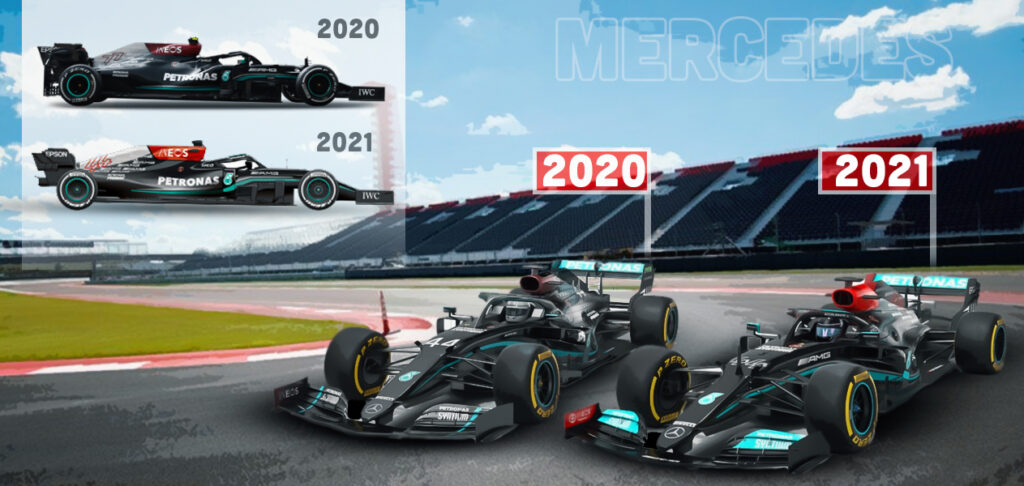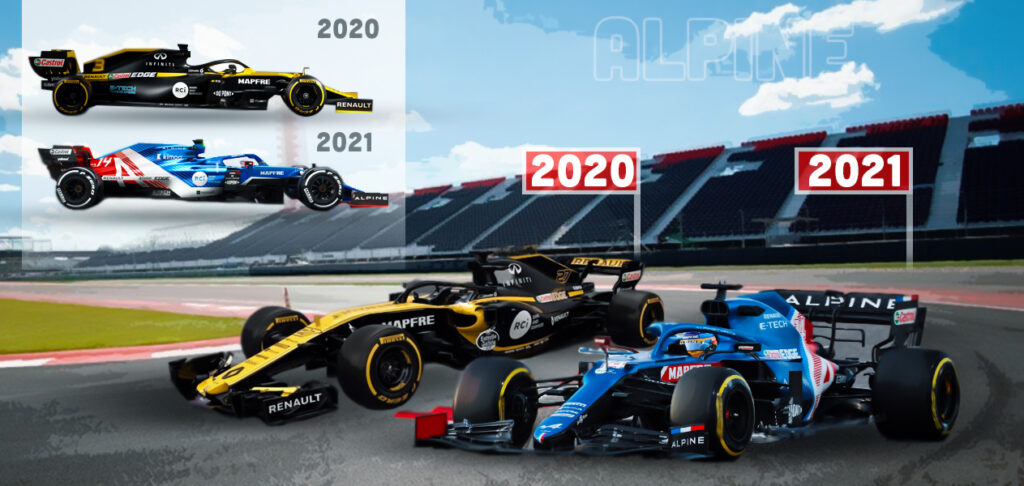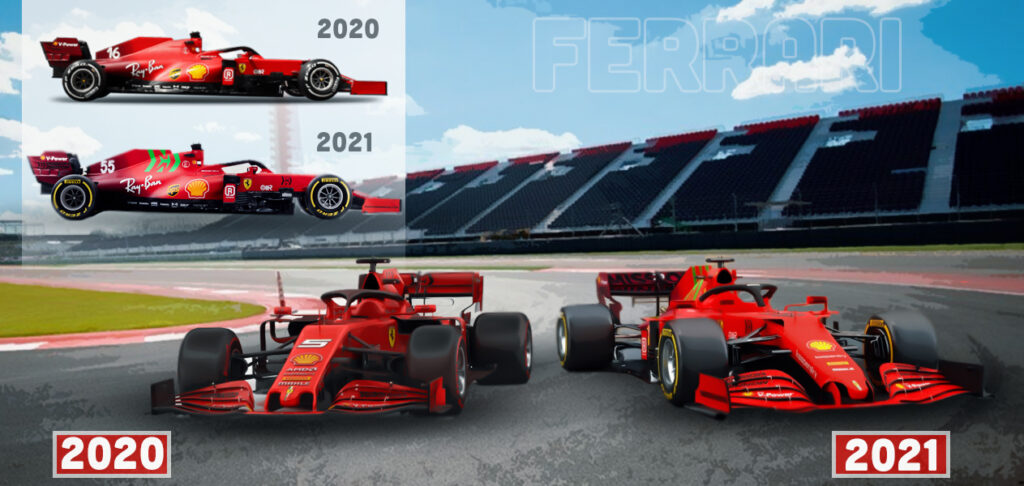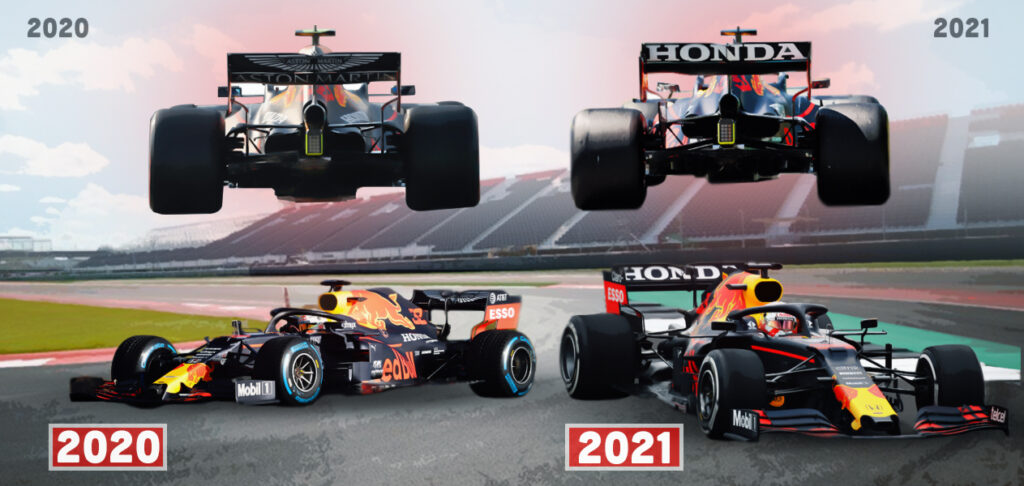After Mercedes and Lewis Hamilton pipped Max Verstappen at Barcelona for the win, there were groans and angst among the F1 fans as it looked like Mercedes were back to retain their crown. Fast forward to the Austrian Grand Prix, and Red Bull have won five races on the bounce.
While their dominance in Monaco and Baku was expected with both being high downforce circuits, the major power shift came at Paul Ricard, which had been Mercedes’ stronghold since 2018. Let’s take a look at what has changed and how the engine manufacturers stack up against each other this season, and for the 2022 cycle.
Ever since the beginning of the hybrid era in 2014, Mercedes have consistently set the bar on the power scale, only dethroned twice by Ferrari in 2017 and 2019, which we will come back to later. Even the restriction to one engine mode, which the competitors loudly demanded in the hope of knocking Mercedes off the top, did nothing to change this. The car only got stronger and blew away its competitors in the 2020 season.

With seven Constructors’ and Drivers’ titles in the seven years of the V6 hybrid era, the 2020 W11 Mercedes car was at the peak of its performance, nearly half a second quicker than its nearest competitor at all tracks, with its power unit (PU) being the best in the class.
But what has changed since then that has put the Silver Arrows in danger of losing their crown?
When the previously planned 2023 engine freeze was decided to be pushed forward by a year to the 2022 season – as it presented one last chance to make significant changes to the engine before engine adjustments effectively become frozen until the end of the current form of hybrid era in 2025 – Honda decided to put all of their eggs in one basket.
The Japanese manufacturers had earlier made it clear that the 2021 season will be their last season in the sport, so when the regulation changes were announced, Honda pledged to develop the 2022 engine one year earlier in a bid to dethrone Mercedes in one last hurrah.
Honda’s extensive redesign has resulted in an engine that is even smaller than the “size zero” concept that was abandoned in 2017 with McLaren. Yet, it packs more power than ever, and has finally enabled Red Bull to have a car and engine capable of taking the fight to Mercedes. Honda’s changes in their rise to the top have been a closely guarded secret, until now.
Honda wanted the engine to be smaller so that the rear of the car can be packaged better, but they also needed to be more powerful as they were surprised how far behind they were from Mercedes last season.
One of the key changes has been redesigning a smaller cylinder head. Honda have made the layout of their camshaft significantly lower and more compact than their predecessors. They have also shortened the cylinder bore spacing and changed the valve angle.
The purpose is to change the shape of the combustion chamber while also reducing the overall size of the engine, lowering the centre of gravity and changing the airflow on the camshaft. Honda’s net result is increased power from the combustion engine, but also a compact overall design which gives Red Bull a more aggressive packaging option. Hence, we have an even more tapered rear end in this year’s RBR16B.
The increased power from the combustion engine hasn’t come at the expense of reducing the output of the MGU-H. The MGU-H is a crucial part of the Energy Recovery System (ERS) that converts heat from the exhaust gases into electrical energy, which can power the MGU-K or can be stored for later.
There’s no limit to how much energy the MGU-H can recover per lap during a race, but a more efficient combustion process can reduce exhaust gases or temperature, therefore, reducing the effectiveness of the MGU-H. To counter this, Honda has extensively modified its turbine and compressor to increase the amount of exhaust energy gases generated.
Although much of Honda’s improvement hasn’t been able to escape some of the eagle-eyed technical experts, they have managed to keep some of the secrets to themselves. One of those secrets has been their ability to offset the ERS deficit they had compared to Mercedes in the 2020 season.
Also Read – F1 – Different Tyres Compounds | Affect on Cars and Races
To increase the durability of the combustion engine, Honda’s have been using plating from their Kumamoto motorcycle mass production facility on the cylinder block, and the gains on the engine itself has been complemented by extra developments in collaboration with Red Bull’s fuel and oil supplier Exxon Mobil, which has unlocked some performance from the engine.
All of this has culminated to bring the new Honda engine at par with the Mercedes engine. But how have they pulled ahead of Mercedes? And where are Renault and Ferrari in comparison to the big dogs?

Renault had two engine developments planned for the ’22 and the ’23 seasons, but that hasn’t gone to plan due to the engine freeze being brought forward to 2022, meaning Renault now have only one cycle to make significant improvements to their engine. However, this hasn’t affected Renault’s plan for their 2021 engine.
As Renault engine boss, Remi Taffin, explained, “The decision we have made back in 2020 was driven by the fact that we would actually put everything on ’22, having in mind that we have another revolution in ’23.
“We could make the best out of the new baseline we had for ’22,” he continued, “which is now not the case anymore because we haven’t got ’23, but actually we are quite happy. We can have, actually, a big push for ’22, so we are even pushing further forwards on some of the evolution we had in ’23 into ’22.”
With a freeze on development last year due to the pandemic, the upgrades that were planned for the 2020 mid-season have been incorporated into the 2021 engine, meaning this year’s engine is just the evolution of the 2020 engine. And the forecasted modification has so far preserved last season’s reliability and has also added a bit of extra performance. With these modifications, Renault were just 10Hp behind leaders Mercedes and Red Bull in Bahrain.
Ferrari, on the other hand, had to free themselves from the deep hole they had dug themselves into given the fuel flow irregularities in the 2019 season. The Maranello-based outfit were the lone competitors who pushed Mercedes to the limit, especially from 2017 to 2019. While reliability issues derailed their title charge in both 2017 and 2018, for the 2019 season, the Italian outfit found a loophole in the technical regulations and exploited it during the second half of the season, before the FIA stepped in.

Although most of the details were kept secret between the FIA and Ferrari as part of a gentlemen’s agreement, a raft of technical directives was issued by the FIA at the start of last season aiming to stop teams from using clever tricks to get around the fuel flow measurement regulations, something Ferrari were allegedly doing before the FIA tightened the thumbscrew.
With the prevailing theory being the use a controlled oil leak from the intercooler into the engine’s combustion process to provide a performance boost, a glimpse of the extent of Ferrari’s engine struggles came to light during the 2020 pre-season testing, while any hopes of improving the PU were thwarted by the freezing of development due to the COVID-19 pandemic.
Based on the data telemetry and GPS tracking, the Ferrari PU was almost 50Hp shy of leaders Mercedes, which also made life difficult for customer teams Alfa Romeo and Haas. But the 2021 power unit packs some interesting updates and modifications that has enabled the Maranello-based outfit to claw back some of their lost power.
Also Read – F1 technology terms explained: flow-vis paint
Rather than going for anything revolutionary, Ferrari are understood to be making incremental changes to all aspects of the thermal properties and electric powertrains which they believe will add up to a sizable gain overall. It is also understood that Ferrari too have evaluated the prospect of going down Mercedes’ route for 2022, thereby splitting the turbine and compressor to sit on either side of the internal combustion engine.
For the 2021 season, though, the previous model is being employed, and the key change that Ferrari’s engine chief, Enrico Gualtieri, introduced is the debut of the ‘Superfast’ cylinder head which had originally been anticipated for 2022 but has been pushed forward by a year.
The new design will help achieve greater fuel atomization and a higher combustion chamber pressure as teams try to get closer to the 500bar Limit laid down by the new regulations, as well as the new pistol crown which will continue to be made of steel and new intake ducts on the camshaft.
Ferrari are also believed to be using new alloys aiming to help ensure the powertrains’ reliability is not compromised by the boost in performance. And thanks to a newly upgraded gearbox, the bodywork at the rear is shrunk and the coke bottle area of the car is significantly larger than last season, which indicates that the reliability problem with the narrow exhaust also appears to have been resolved as they now can be crammed into a smaller space.
The new engine has also not given up the wastegate valve which can be removed this year for the first time. This is in order to exploit the aerodynamic effect of the blown exhaust as much as possible using the expelled gases to provide additional downforce to the diffuser.
The engine cooling system has also been revised in a bid to change the radiator design used in 2020 that ended up producing too much drag in the side pods, which further highlighted the lacklustre straight-line speed of the SF-1000.
The new Ferrari power unit is also believed to have a smaller turbine in an attempt to improve electrical charging. The idea is to have a much more efficient energy recovery system, so the delivery of the MGU-K’s approximate 160Hp can last longer throughout the lap – an important factor in trying to reduce the overall deficit to Mercedes and their superior powertrain.
In their first attempt, Ferrari have clawed back more than half of the deficit to Mercedes. As per the data telemetry from the pre-season testing till the Azerbaijan Grand Prix, the Ferrari power unit was 10-15Hp shy of Red Bull and Mercedes, while Ferrari’s electric charging is the best in class.

Let’s talk about the changes Mercedes and Red Bull have made since Baku. Two things happened in France – Mercedes returned with their wider rear wing and Hondo ignited an expansion stage. Since then, the roles have reversed completely, with Red Bull dominating on tracks that were once Mercedes’ backyard.
According to measurements taken by Mercedes at Paul Ricard, the Honda power unit has gained ten kilowatts (13.6Hp) of power. And the difference was visible due to the AlphaTauri running on different specification engines.
After his massive shunt at Imola, the Japanese rookie Yuki Tsunoda has been using his second power unit, but its specification is the same as the first one. Pierre Gasly, on the other hand, got the new second specification engine like the Red Bull drivers in France.
The increase in performance can be down to two reasons. Either the Honda engine loses a lot of horsepower over its service life, or the development centre in Sakura has been able to extract a higher power level that can be used thanks to improved reliability. Perhaps both are true.
This is not unusual in Formula 1. Despite the restrictions in development, the engine manufacturers can continue to work on reliability, but the teams are required to remain in constant dialogue with the FIA. Manufacturers must inform the FIA ??in detail which parts of the power unit they are changing and why. The other manufacturers are notified by the FIA. If there is even the slightest of suspicions that it could lead to a more direct performance, the proposal gets rejected immediately.
An increase in performance through the back door, on the other hand, is tolerated. The fact that it is as much as Mercedes claim to have calculated raises a few eyebrows, but Ferrari, Renault and Mercedes could have vetoed in advance.
Also Read – Most Affluent Formula 1 Drivers in History
With Red Bull’s latest power gain, Mercedes now have the second quickest power unit – 13.6Hp adrift. Renault’s PU, despite its lack of development, remains 20-25Hp behind that of the Milton Keynes outfit, while Ferrari’s remains as the backmarker – 25-30Hp behind.
Ferrari’s development train, however, has been really positive, and by the time the 2022 season kicks off, they are expected to be there or thereabouts to have the fastest engine on the grid. As far as Red Bull are concerned, Honda have been silently working on the 2022 engine, so that when they leave the sport, Red Bull and AlphaTauri will have the updated and latest specification engine available to them.
Honda have been burning money from their own pocket and have signed a deal with Red Bull that allows the Austrian team to take in Honda’s latest power unit to their new engine facility – Red Bull Powertrains (HPP).
And as far as this season is concerned, both Red Bull and Mercedes have a few upgrades left in the pipeline. While Mercedes are expected to bring an aerodynamic upgrade to Silverstone and another engine upgrade is scheduled for the Hungaroring Grand Prix, Red Bull, on the other hand, have already done massive upgrades to their diffuser and floor, and are expected to bring in a few more before the season ends.
In the meantime, both Ferrari and Renault have switched their focus to the 2022 season, and no major upgrades are expected from either manufacturers for the rest of the season.















